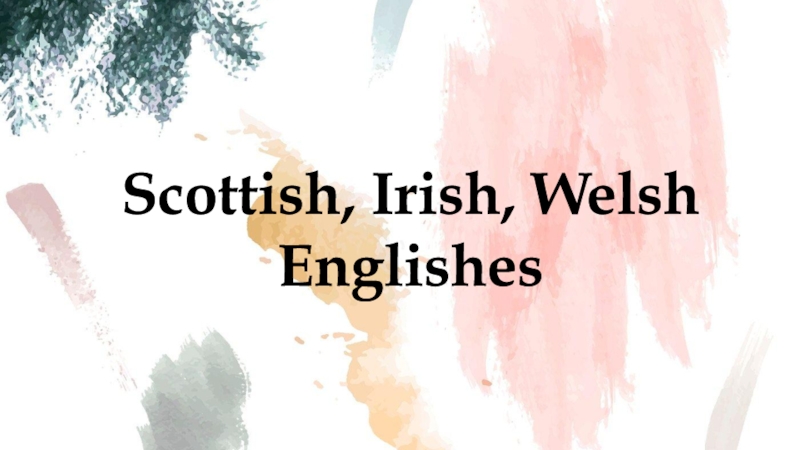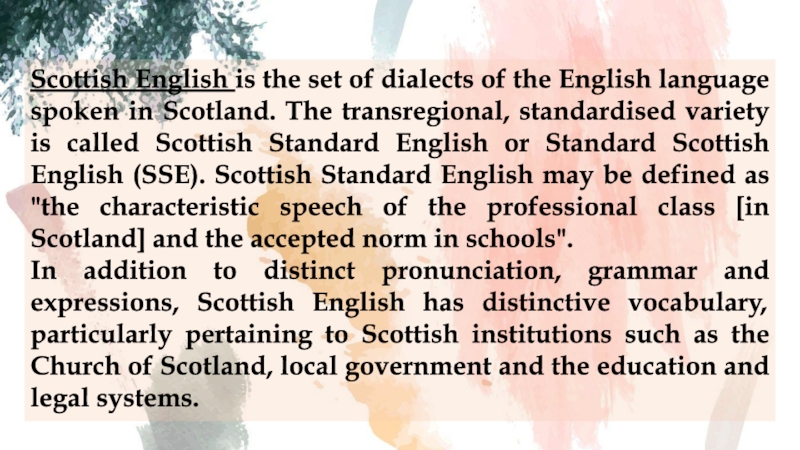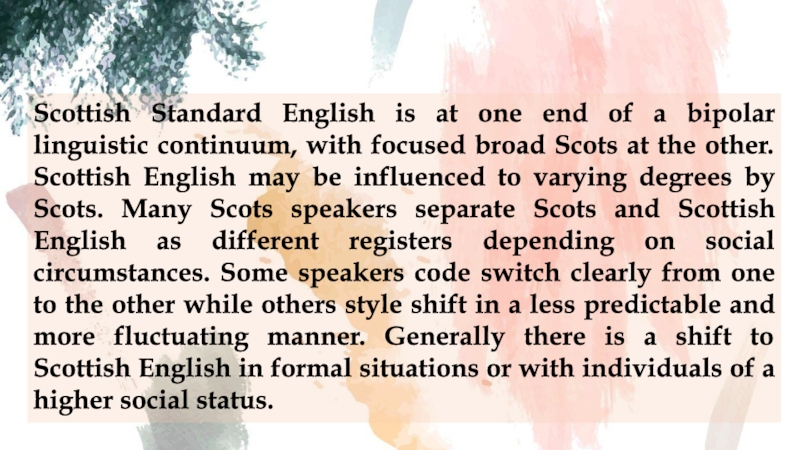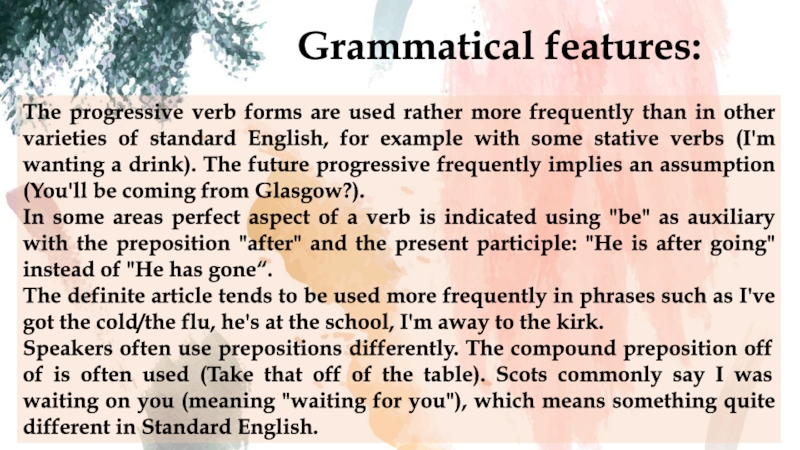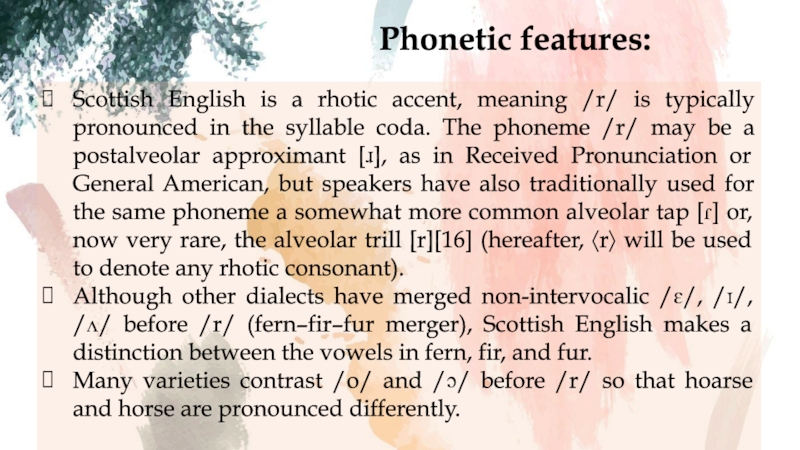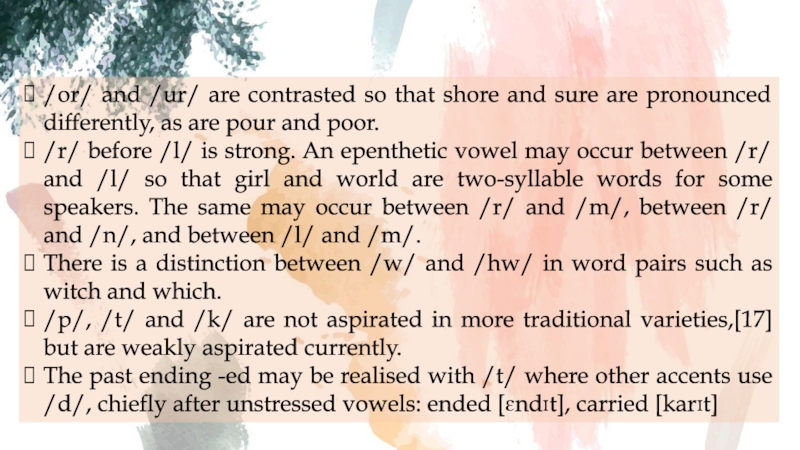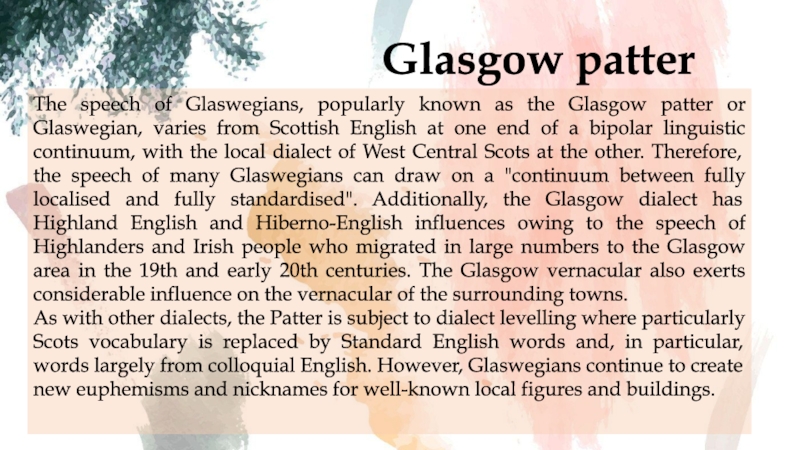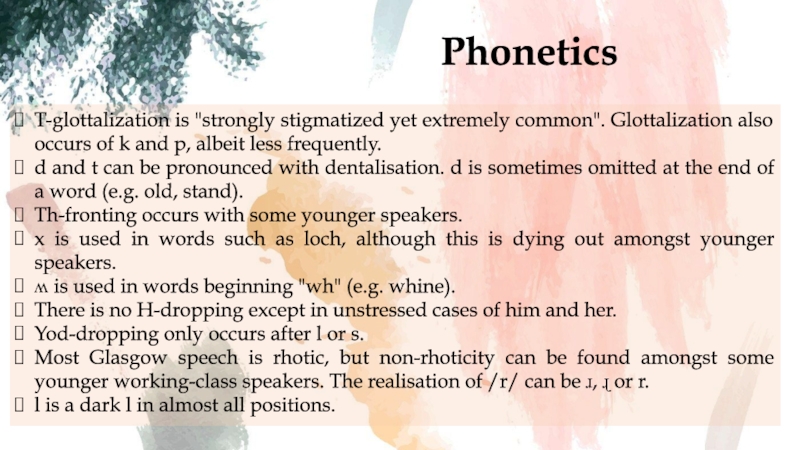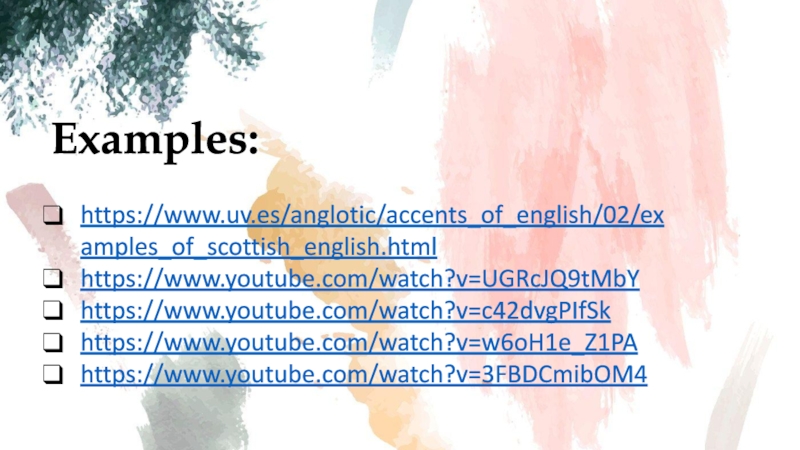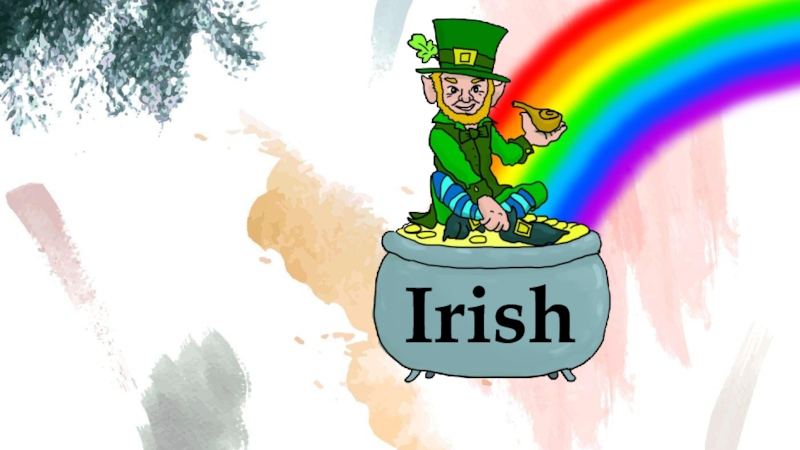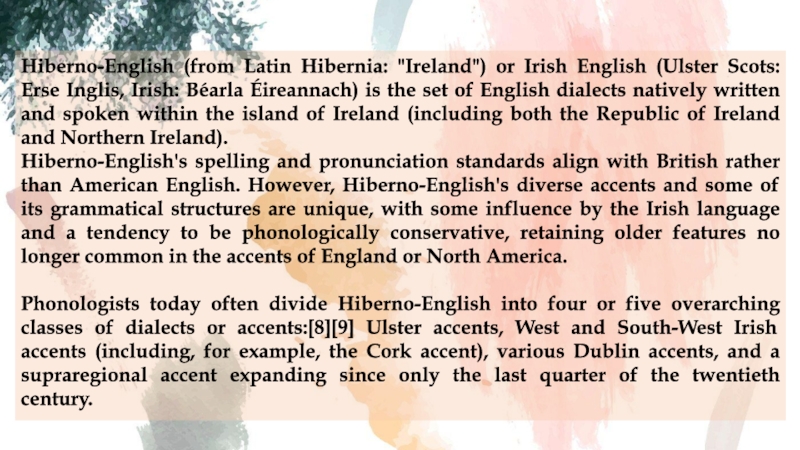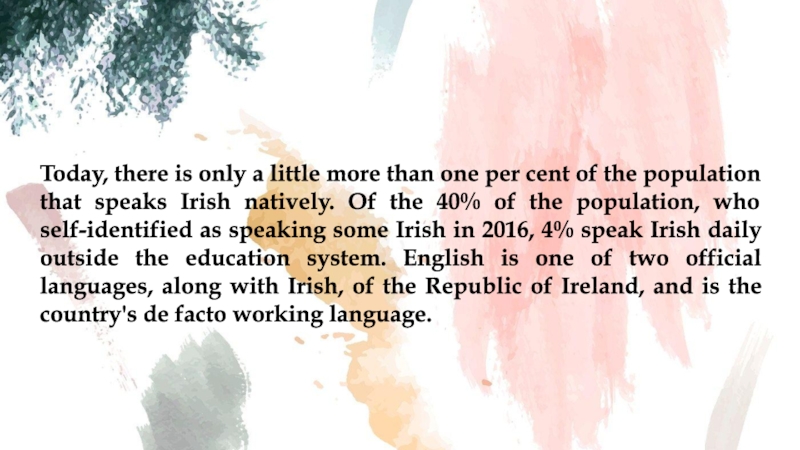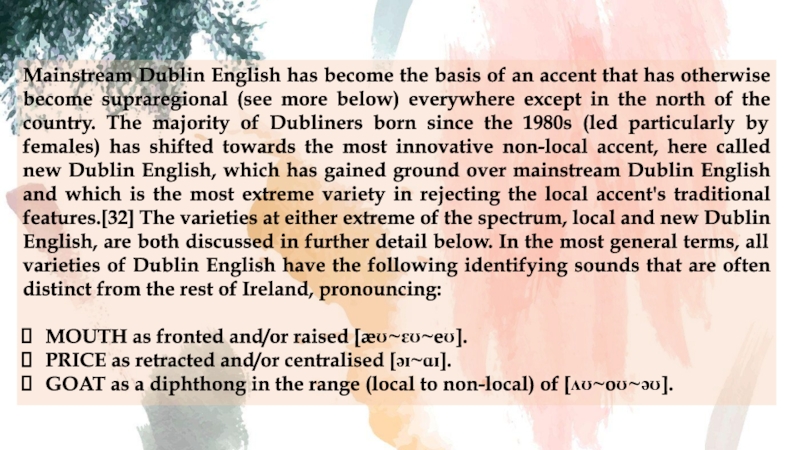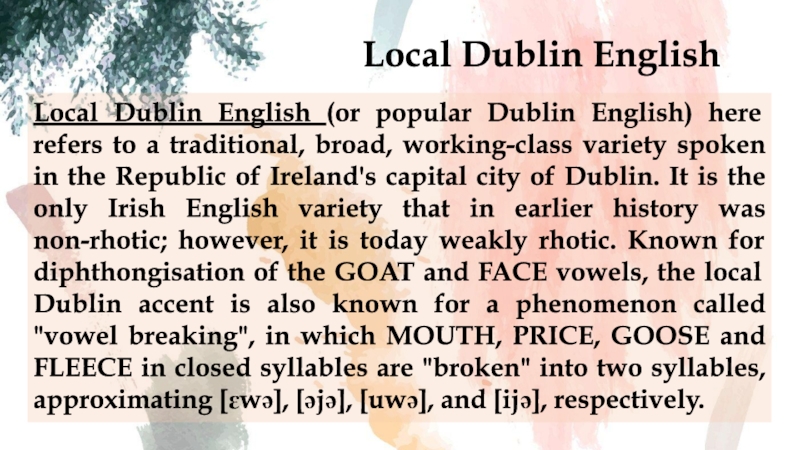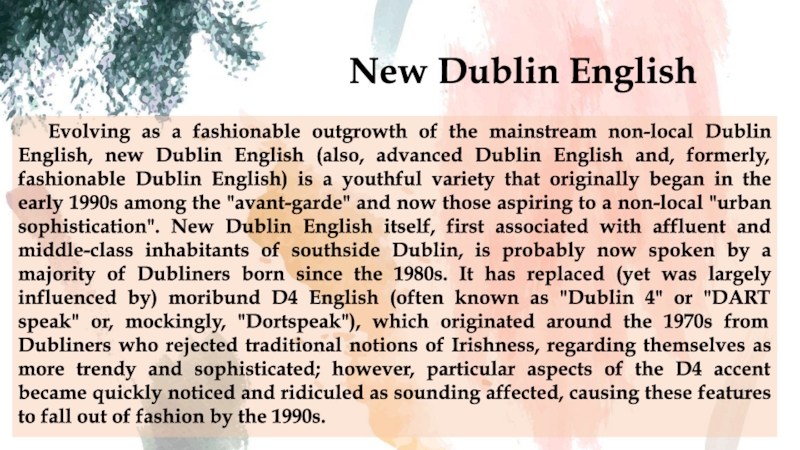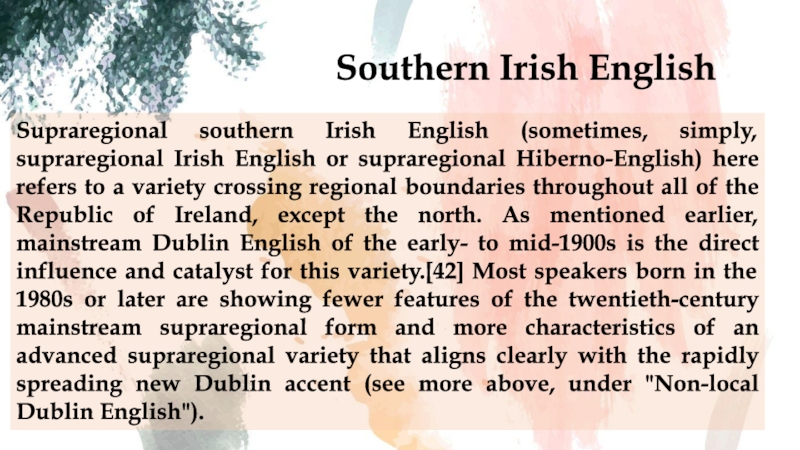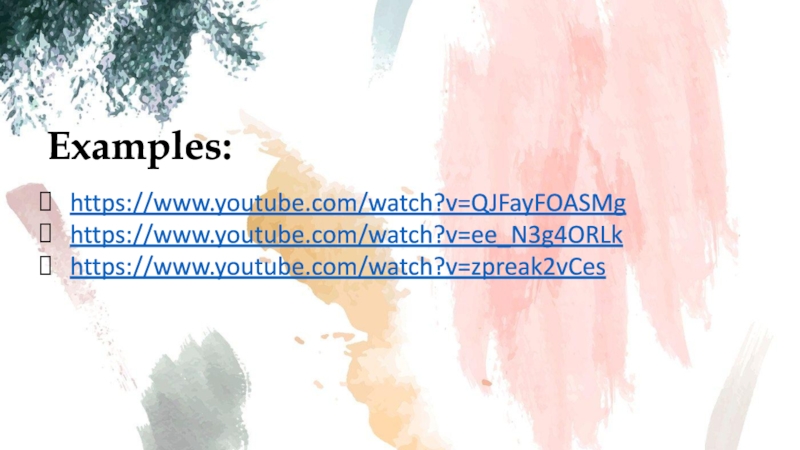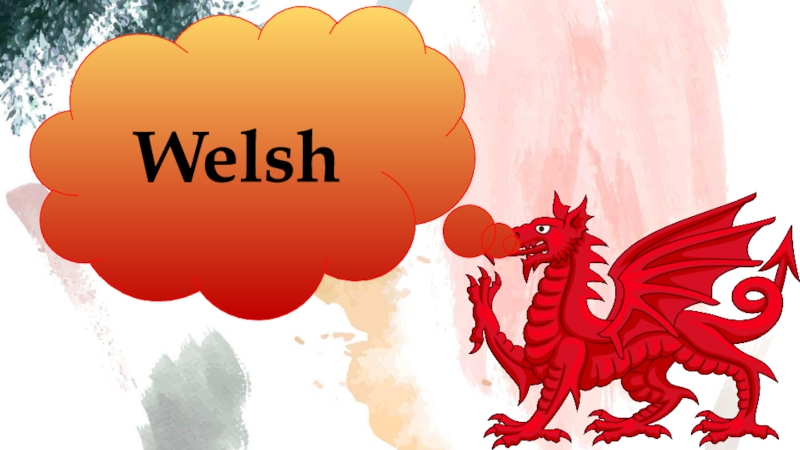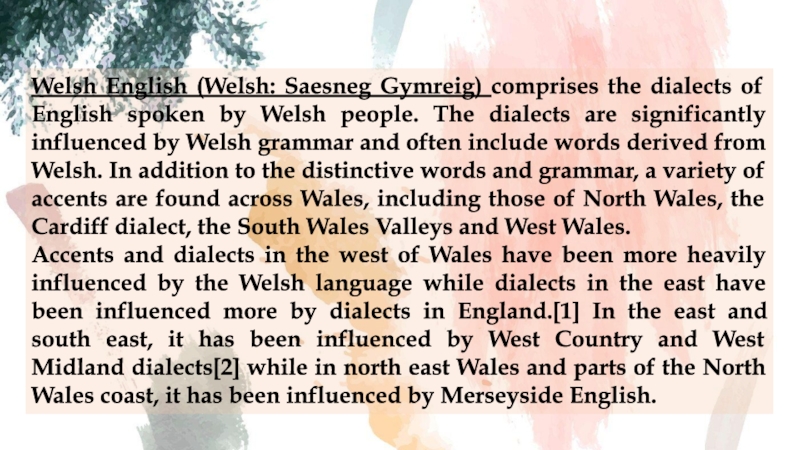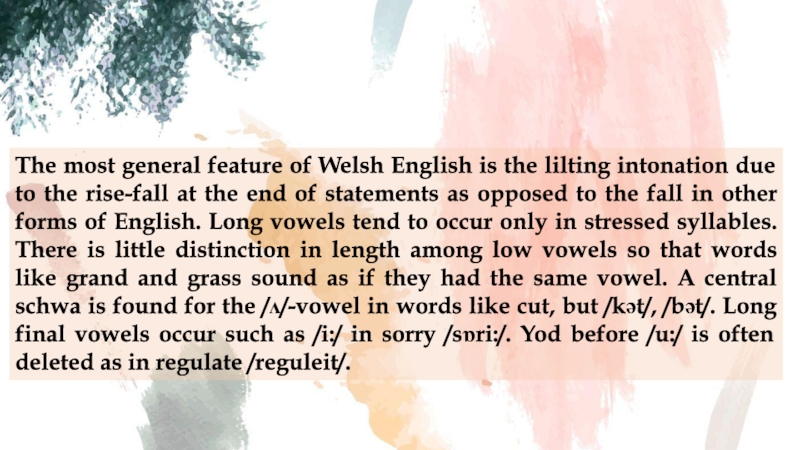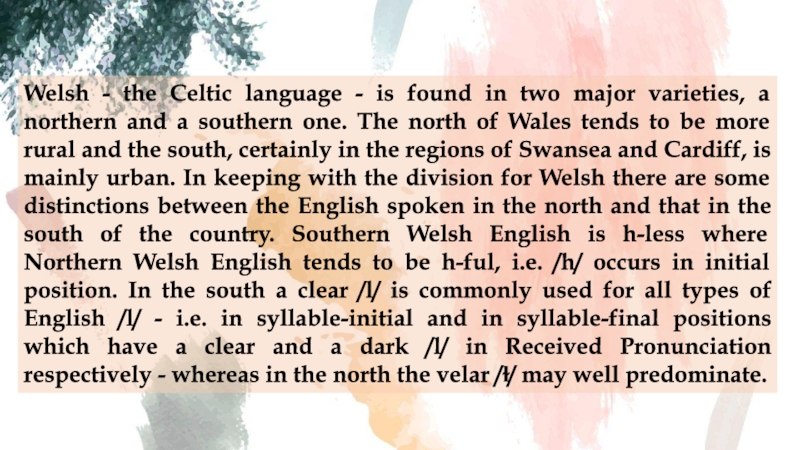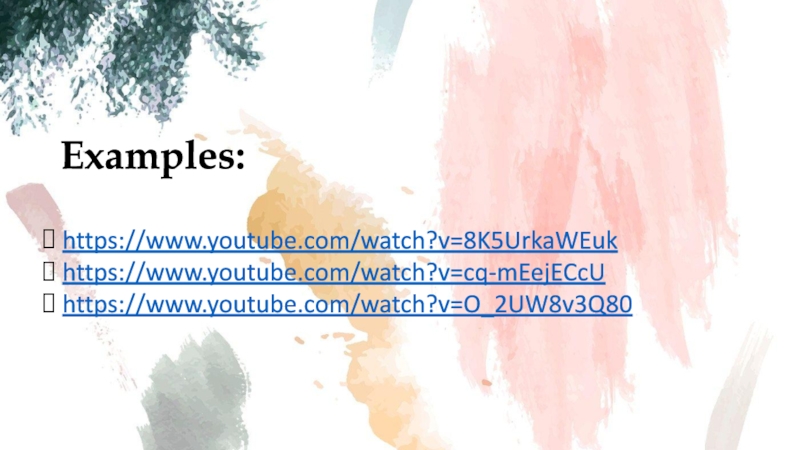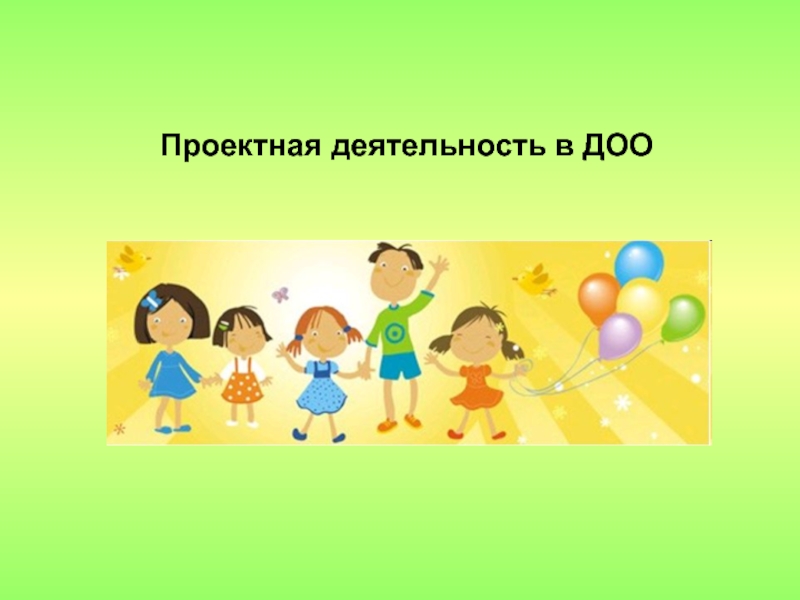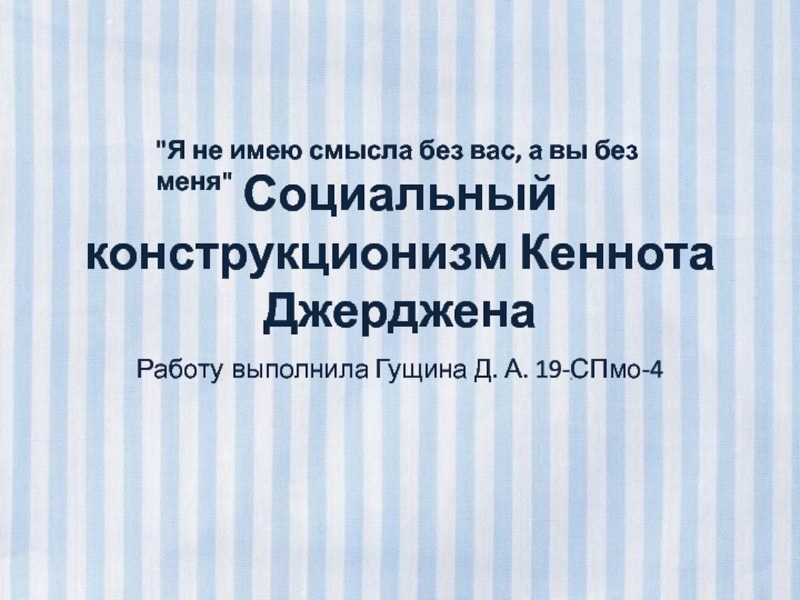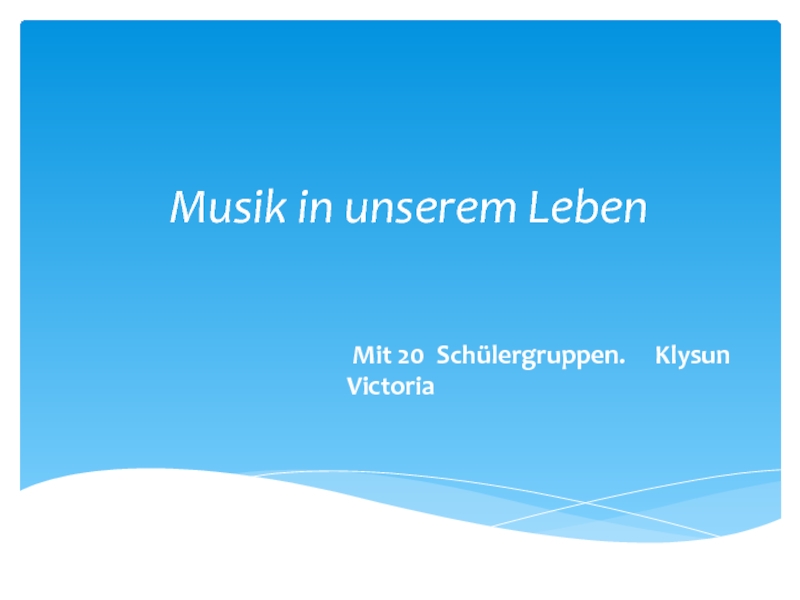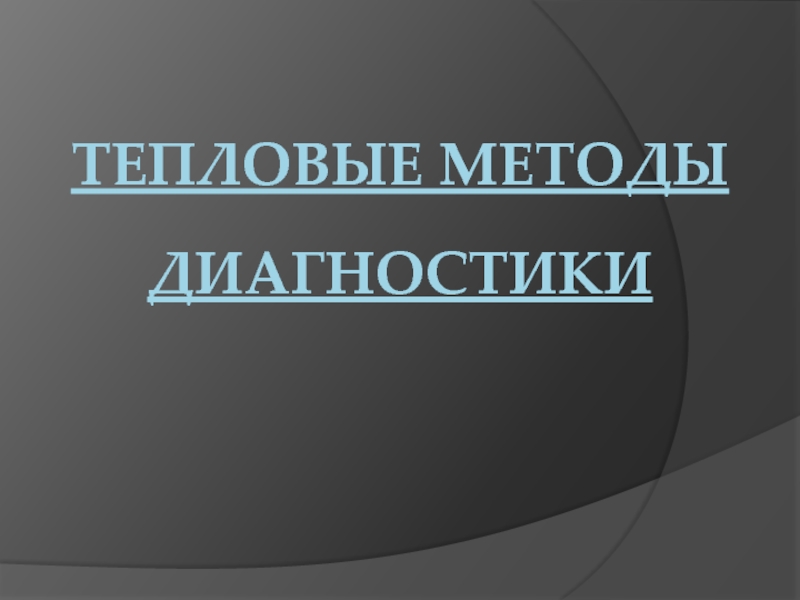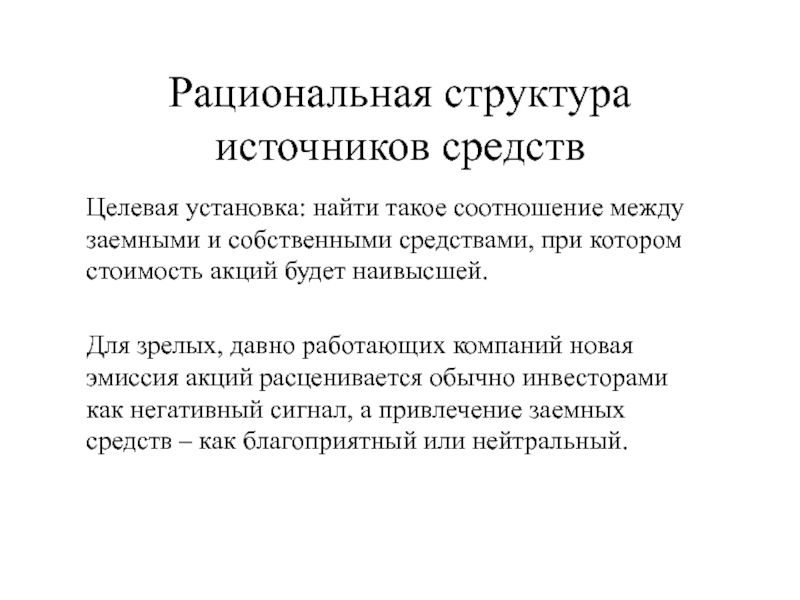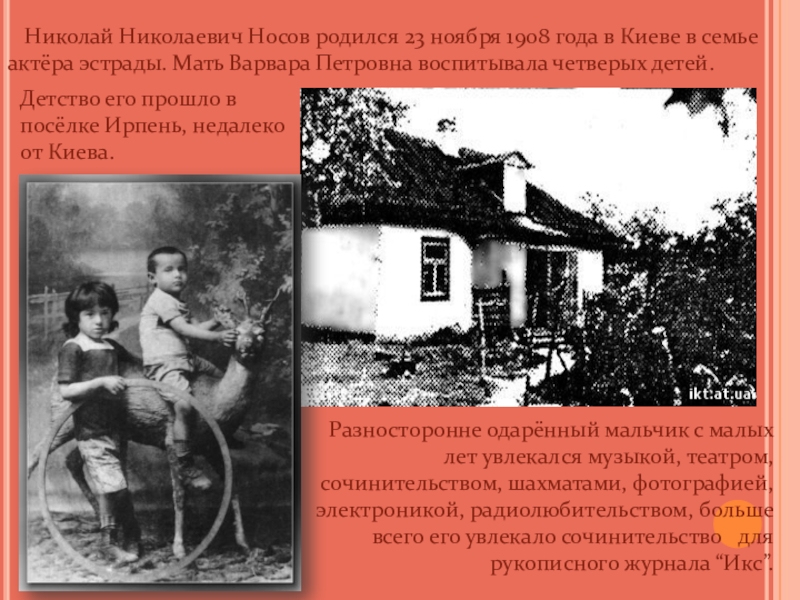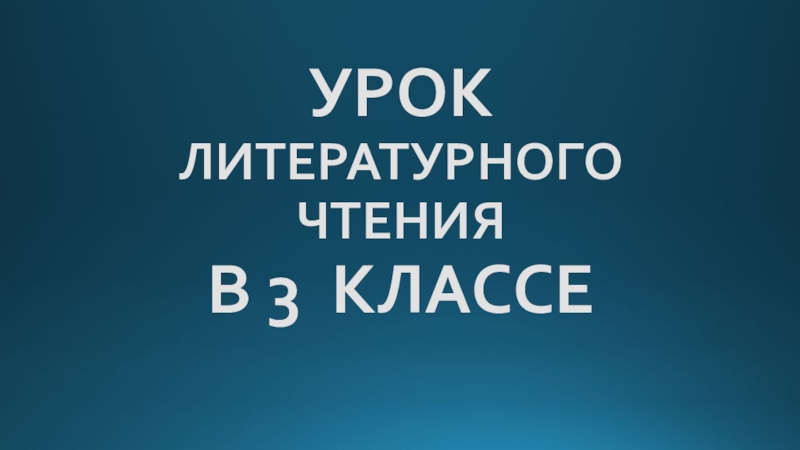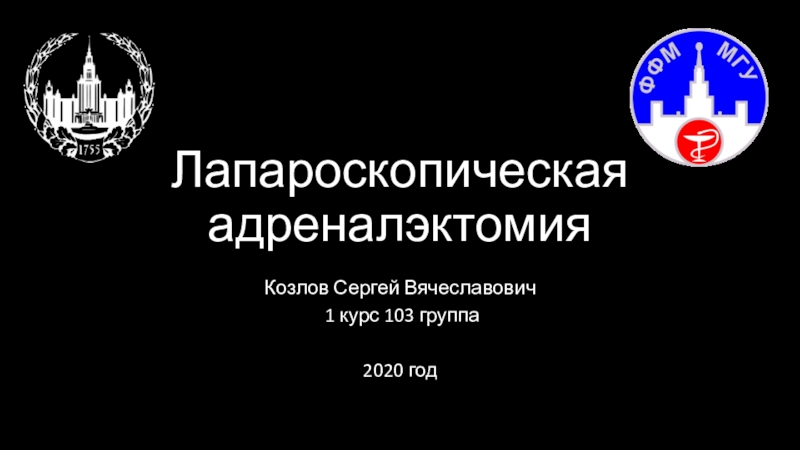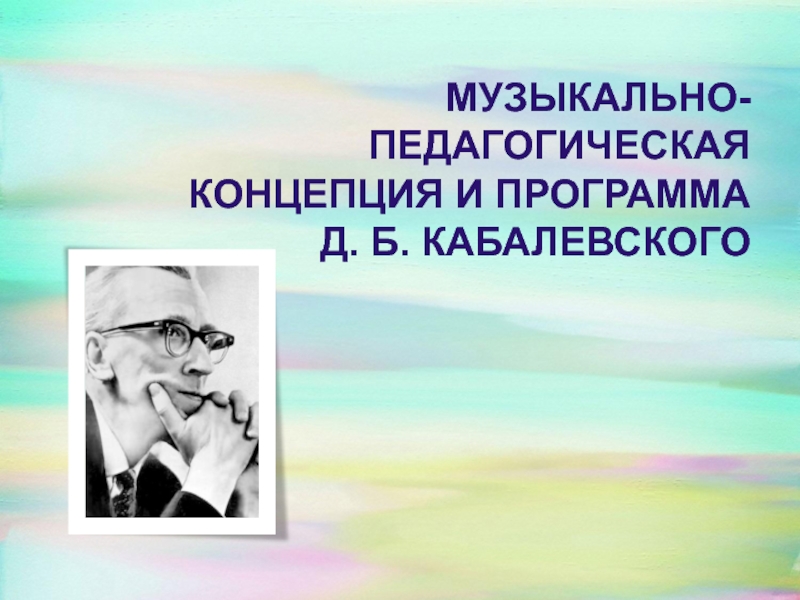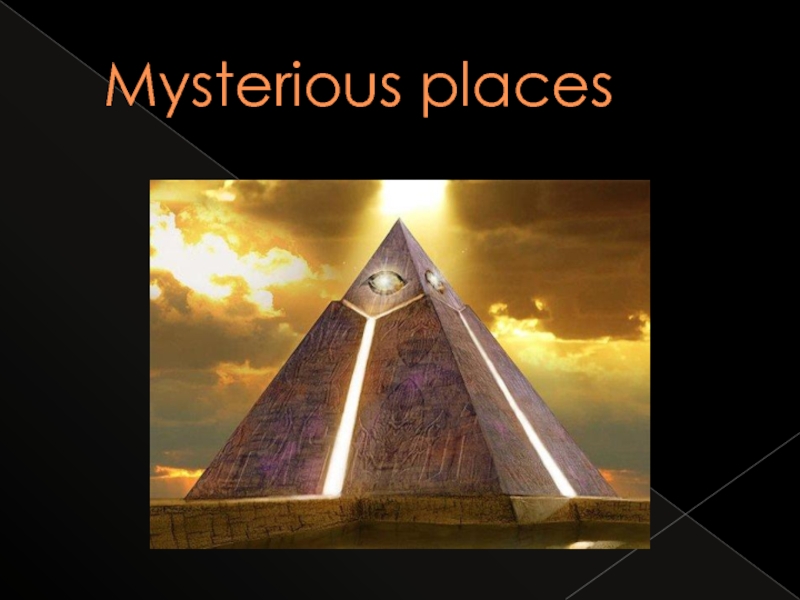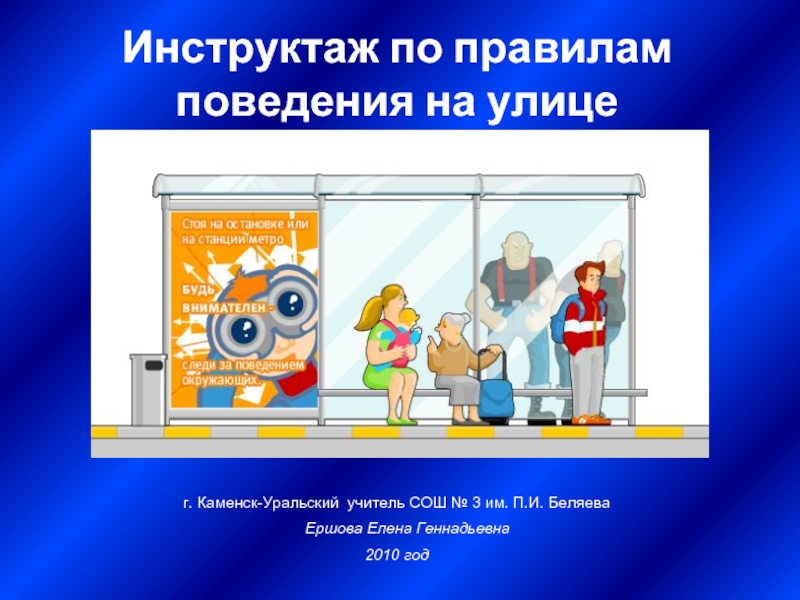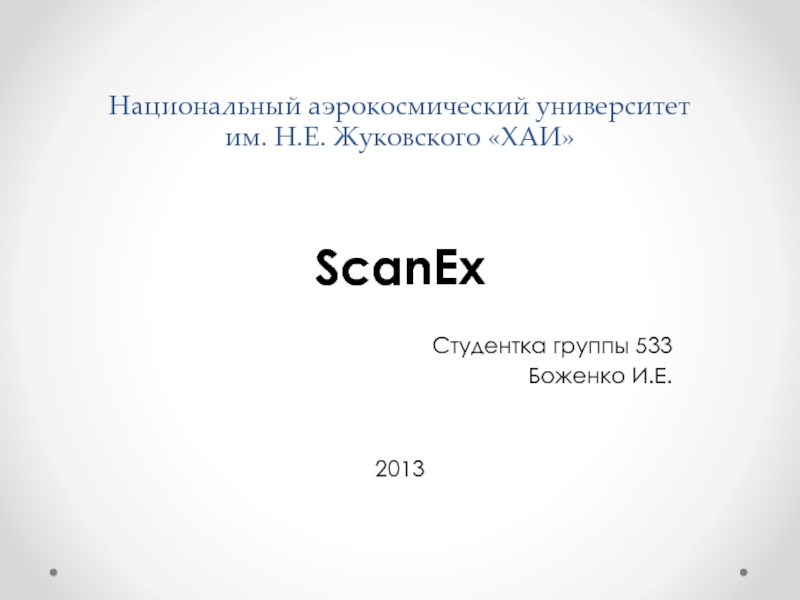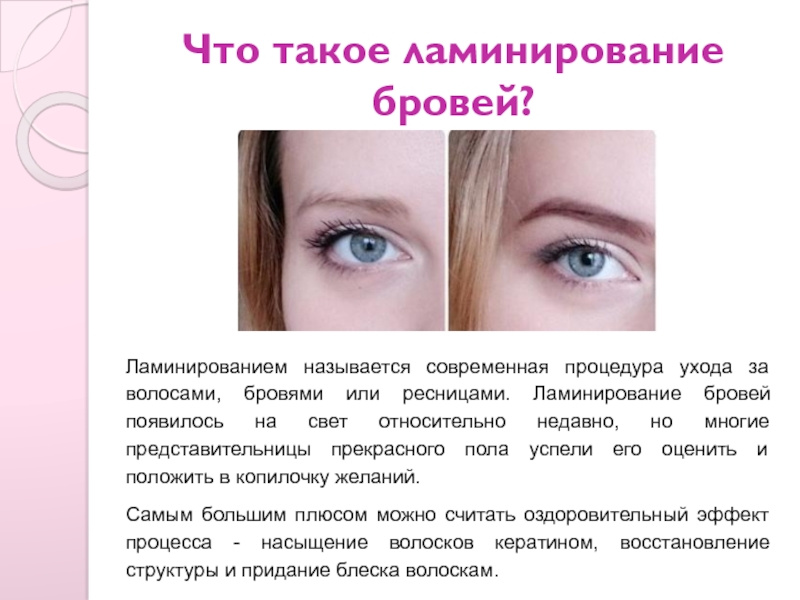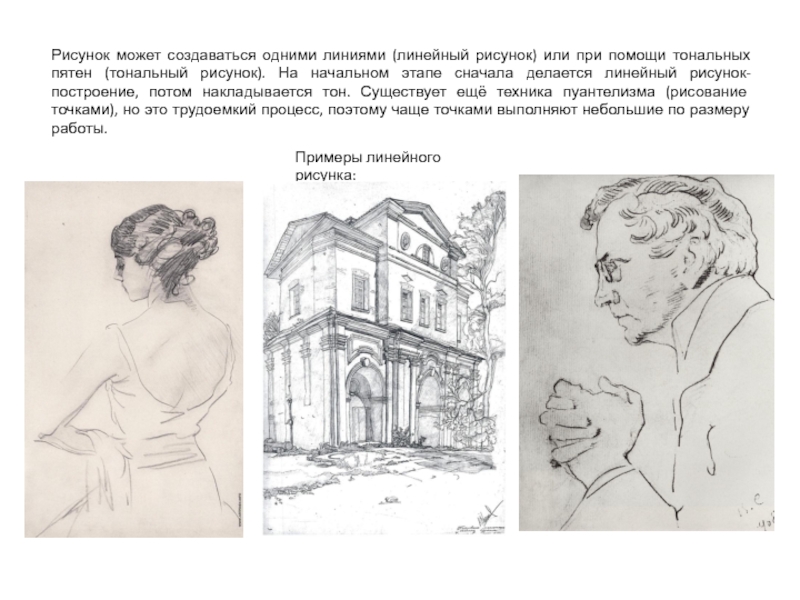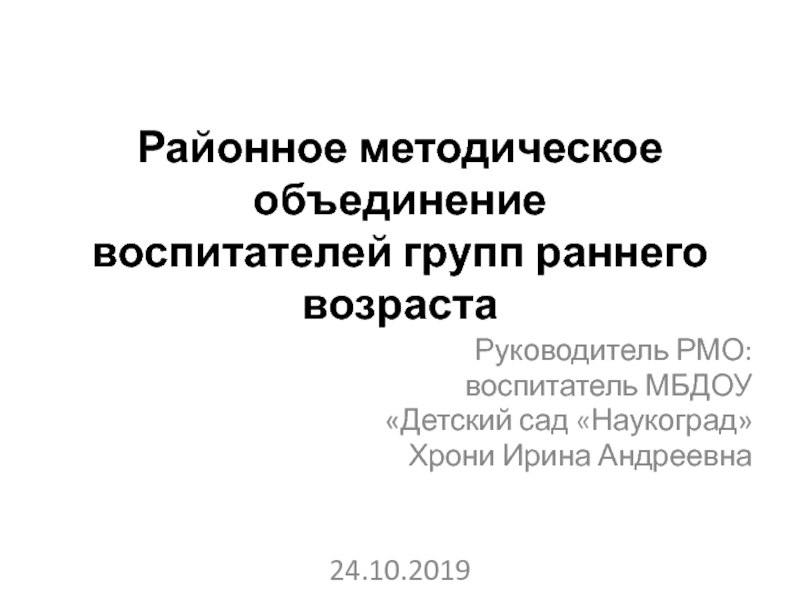Слайд 1Scottish, Irish, Welsh
Englishes
Слайд 3Scottish English is the set of dialects of the English
language spoken in Scotland. The transregional, standardised variety is called
Scottish Standard English or Standard Scottish English (SSE). Scottish Standard English may be defined as "the characteristic speech of the professional class [in Scotland] and the accepted norm in schools".
In addition to distinct pronunciation, grammar and expressions, Scottish English has distinctive vocabulary, particularly pertaining to Scottish institutions such as the Church of Scotland, local government and the education and legal systems.
Слайд 4Scottish Standard English is at one end of a bipolar
linguistic continuum, with focused broad Scots at the other. Scottish
English may be influenced to varying degrees by Scots. Many Scots speakers separate Scots and Scottish English as different registers depending on social circumstances. Some speakers code switch clearly from one to the other while others style shift in a less predictable and more fluctuating manner. Generally there is a shift to Scottish English in formal situations or with individuals of a higher social status.
Слайд 5The progressive verb forms are used rather more frequently than
in other varieties of standard English, for example with some
stative verbs (I'm wanting a drink). The future progressive frequently implies an assumption (You'll be coming from Glasgow?).
In some areas perfect aspect of a verb is indicated using "be" as auxiliary with the preposition "after" and the present participle: "He is after going" instead of "He has gone“.
The definite article tends to be used more frequently in phrases such as I've got the cold/the flu, he's at the school, I'm away to the kirk.
Speakers often use prepositions differently. The compound preposition off of is often used (Take that off of the table). Scots commonly say I was waiting on you (meaning "waiting for you"), which means something quite different in Standard English.
Grammatical features:
Слайд 6Phonetic features:
Scottish English is a rhotic accent, meaning /r/ is
typically pronounced in the syllable coda. The phoneme /r/ may
be a postalveolar approximant [ɹ], as in Received Pronunciation or General American, but speakers have also traditionally used for the same phoneme a somewhat more common alveolar tap [ɾ] or, now very rare, the alveolar trill [r][16] (hereafter, ⟨r⟩ will be used to denote any rhotic consonant).
Although other dialects have merged non-intervocalic /ɛ/, /ɪ/, /ʌ/ before /r/ (fern–fir–fur merger), Scottish English makes a distinction between the vowels in fern, fir, and fur.
Many varieties contrast /o/ and /ɔ/ before /r/ so that hoarse and horse are pronounced differently.
Слайд 7/or/ and /ur/ are contrasted so that shore and sure
are pronounced differently, as are pour and poor.
/r/ before /l/
is strong. An epenthetic vowel may occur between /r/ and /l/ so that girl and world are two-syllable words for some speakers. The same may occur between /r/ and /m/, between /r/ and /n/, and between /l/ and /m/.
There is a distinction between /w/ and /hw/ in word pairs such as witch and which.
/p/, /t/ and /k/ are not aspirated in more traditional varieties,[17] but are weakly aspirated currently.
The past ending -ed may be realised with /t/ where other accents use /d/, chiefly after unstressed vowels: ended [ɛndɪt], carried [karɪt]
Слайд 8Glasgow patter
The speech of Glaswegians, popularly known as the Glasgow
patter or Glaswegian, varies from Scottish English at one end
of a bipolar linguistic continuum, with the local dialect of West Central Scots at the other. Therefore, the speech of many Glaswegians can draw on a "continuum between fully localised and fully standardised". Additionally, the Glasgow dialect has Highland English and Hiberno-English influences owing to the speech of Highlanders and Irish people who migrated in large numbers to the Glasgow area in the 19th and early 20th centuries. The Glasgow vernacular also exerts considerable influence on the vernacular of the surrounding towns.
As with other dialects, the Patter is subject to dialect levelling where particularly Scots vocabulary is replaced by Standard English words and, in particular, words largely from colloquial English. However, Glaswegians continue to create new euphemisms and nicknames for well-known local figures and buildings.
Слайд 9T-glottalization is "strongly stigmatized yet extremely common". Glottalization also occurs
of k and p, albeit less frequently.
d and t can
be pronounced with dentalisation. d is sometimes omitted at the end of a word (e.g. old, stand).
Th-fronting occurs with some younger speakers.
x is used in words such as loch, although this is dying out amongst younger speakers.
ʍ is used in words beginning "wh" (e.g. whine).
There is no H-dropping except in unstressed cases of him and her.
Yod-dropping only occurs after l or s.
Most Glasgow speech is rhotic, but non-rhoticity can be found amongst some younger working-class speakers. The realisation of /r/ can be ɹ, ɻ or r.
l is a dark l in almost all positions.
Phonetics
Слайд 10Examples:
https://www.uv.es/anglotic/accents_of_english/02/examples_of_scottish_english.html
https://www.youtube.com/watch?v=UGRcJQ9tMbY
https://www.youtube.com/watch?v=c42dvgPIfSk
https://www.youtube.com/watch?v=w6oH1e_Z1PA
https://www.youtube.com/watch?v=3FBDCmibOM4
Слайд 12Hiberno-English (from Latin Hibernia: "Ireland") or Irish English (Ulster Scots:
Erse Inglis, Irish: Béarla Éireannach) is the set of English
dialects natively written and spoken within the island of Ireland (including both the Republic of Ireland and Northern Ireland).
Hiberno-English's spelling and pronunciation standards align with British rather than American English. However, Hiberno-English's diverse accents and some of its grammatical structures are unique, with some influence by the Irish language and a tendency to be phonologically conservative, retaining older features no longer common in the accents of England or North America.
Phonologists today often divide Hiberno-English into four or five overarching classes of dialects or accents:[8][9] Ulster accents, West and South-West Irish accents (including, for example, the Cork accent), various Dublin accents, and a supraregional accent expanding since only the last quarter of the twentieth century.
Слайд 13Today, there is only a little more than one per
cent of the population that speaks Irish natively. Of the
40% of the population, who self-identified as speaking some Irish in 2016, 4% speak Irish daily outside the education system. English is one of two official languages, along with Irish, of the Republic of Ireland, and is the country's de facto working language.
Слайд 14Dublin English is highly internally diverse and refers collectively to
the Irish English varieties immediately surrounding and within the metropolitan
area of Dublin. Modern-day Dublin English largely lies on a phonological continuum,[citation needed] ranging from a more traditional, lower-prestige, local urban accent on the one end to a more recently developing, higher-prestige, non-local (regional and even supraregional) accent on the other end, whose most advanced characteristics only first emerged in the late 1980s and 1990s.[31] The accent that most strongly uses the traditional working-class features has been labelled by linguists as local Dublin English. Most speakers from Dublin and its suburbs, however, have accent features falling variously along the entire middle as well as the newer end of the spectrum, which together form what is called non-local Dublin English, spoken by middle- and upper-class natives of Dublin and the greater eastern Irish region surrounding the city. A subset of this variety, whose middle-class speakers mostly range in the middle section of the continuum, is called mainstream Dublin English.
Dublin English
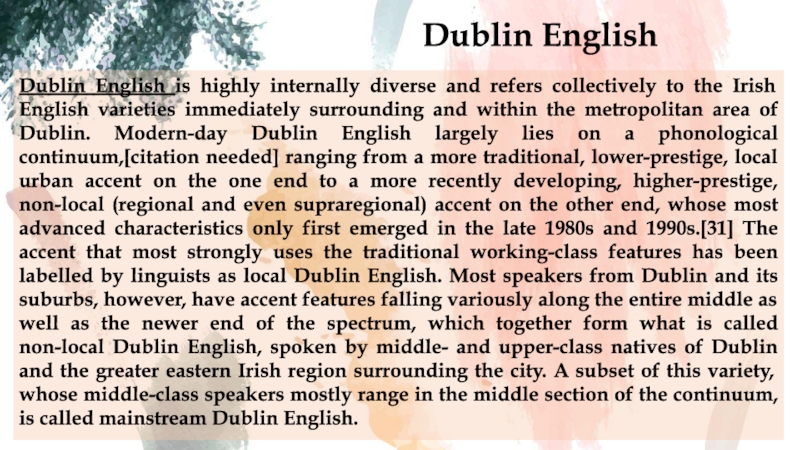
Слайд 15Mainstream Dublin English has become the basis of an accent
that has otherwise become supraregional (see more below) everywhere except
in the north of the country. The majority of Dubliners born since the 1980s (led particularly by females) has shifted towards the most innovative non-local accent, here called new Dublin English, which has gained ground over mainstream Dublin English and which is the most extreme variety in rejecting the local accent's traditional features.[32] The varieties at either extreme of the spectrum, local and new Dublin English, are both discussed in further detail below. In the most general terms, all varieties of Dublin English have the following identifying sounds that are often distinct from the rest of Ireland, pronouncing:
MOUTH as fronted and/or raised [æʊ~ɛʊ~eʊ].
PRICE as retracted and/or centralised [əɪ~ɑɪ].
GOAT as a diphthong in the range (local to non-local) of [ʌʊ~oʊ~əʊ].
Слайд 16Local Dublin English (or popular Dublin English) here refers to
a traditional, broad, working-class variety spoken in the Republic of
Ireland's capital city of Dublin. It is the only Irish English variety that in earlier history was non-rhotic; however, it is today weakly rhotic. Known for diphthongisation of the GOAT and FACE vowels, the local Dublin accent is also known for a phenomenon called "vowel breaking", in which MOUTH, PRICE, GOOSE and FLEECE in closed syllables are "broken" into two syllables, approximating [ɛwə], [əjə], [uwə], and [ijə], respectively.
Local Dublin English
Слайд 17 Evolving as a fashionable outgrowth of the mainstream non-local Dublin
English, new Dublin English (also, advanced Dublin English and, formerly,
fashionable Dublin English) is a youthful variety that originally began in the early 1990s among the "avant-garde" and now those aspiring to a non-local "urban sophistication". New Dublin English itself, first associated with affluent and middle-class inhabitants of southside Dublin, is probably now spoken by a majority of Dubliners born since the 1980s. It has replaced (yet was largely influenced by) moribund D4 English (often known as "Dublin 4" or "DART speak" or, mockingly, "Dortspeak"), which originated around the 1970s from Dubliners who rejected traditional notions of Irishness, regarding themselves as more trendy and sophisticated; however, particular aspects of the D4 accent became quickly noticed and ridiculed as sounding affected, causing these features to fall out of fashion by the 1990s.
New Dublin English
Слайд 18Supraregional southern Irish English (sometimes, simply, supraregional Irish English or
supraregional Hiberno-English) here refers to a variety crossing regional boundaries
throughout all of the Republic of Ireland, except the north. As mentioned earlier, mainstream Dublin English of the early- to mid-1900s is the direct influence and catalyst for this variety.[42] Most speakers born in the 1980s or later are showing fewer features of the twentieth-century mainstream supraregional form and more characteristics of an advanced supraregional variety that aligns clearly with the rapidly spreading new Dublin accent (see more above, under "Non-local Dublin English").
Southern Irish English
Слайд 19Examples:
https://www.youtube.com/watch?v=QJFayFOASMg
https://www.youtube.com/watch?v=ee_N3g4ORLk
https://www.youtube.com/watch?v=zpreak2vCes
Слайд 21Welsh English (Welsh: Saesneg Gymreig) comprises the dialects of English
spoken by Welsh people. The dialects are significantly influenced by
Welsh grammar and often include words derived from Welsh. In addition to the distinctive words and grammar, a variety of accents are found across Wales, including those of North Wales, the Cardiff dialect, the South Wales Valleys and West Wales.
Accents and dialects in the west of Wales have been more heavily influenced by the Welsh language while dialects in the east have been influenced more by dialects in England.[1] In the east and south east, it has been influenced by West Country and West Midland dialects[2] while in north east Wales and parts of the North Wales coast, it has been influenced by Merseyside English.
Слайд 22The most general feature of Welsh English is the lilting
intonation due to the rise-fall at the end of statements
as opposed to the fall in other forms of English. Long vowels tend to occur only in stressed syllables. There is little distinction in length among low vowels so that words like grand and grass sound as if they had the same vowel. A central schwa is found for the /ʌ/-vowel in words like cut, but /kət/, /bət/. Long final vowels occur such as /i:/ in sorry /sɒri:/. Yod before /u:/ is often deleted as in regulate /reguleit/.
Слайд 23Welsh - the Celtic language - is found in two
major varieties, a northern and a southern one. The north
of Wales tends to be more rural and the south, certainly in the regions of Swansea and Cardiff, is mainly urban. In keeping with the division for Welsh there are some distinctions between the English spoken in the north and that in the south of the country. Southern Welsh English is h-less where Northern Welsh English tends to be h-ful, i.e. /h/ occurs in initial position. In the south a clear /l/ is commonly used for all types of English /l/ - i.e. in syllable-initial and in syllable-final positions which have a clear and a dark /l/ in Received Pronunciation respectively - whereas in the north the velar /ɫ/ may well predominate.
Слайд 24Examples:
https://www.youtube.com/watch?v=8K5UrkaWEuk
https://www.youtube.com/watch?v=cq-mEejECcU
https://www.youtube.com/watch?v=O_2UW8v3Q80
